
Okadera Temple is also known as the “Dragon Lid Temple.”
If you’ve been following our recent travel reports from Nara, you’ll know that there’s a set of four sites known as the Four Great Temples of Yamato (Yamato being the historical name for the region). We’ve already told you about Hasedera, Muroji, and Abe Monjuin, and today we’re finishing off the pilgrimage to the last of the four, Okadera, located in Nara Prefecture’s Takaichi district.
When visiting temples in Japan, it’s customary to stop at a fountain called the chozuya, or sometimes the temizuya, that’s located right inside the gate to purify your hands with the water there. Usually, the water flows into an otherwise trough, but Okadera has become famous among photographers for its unique practice of periodically filling its chozuya with beautiful flowers, as they had on the day when we stopped by.
Okadera was founded in the year 663, and over the years it’s acquired special cultural significance because of its dragon legend and Buddhist statuary. Starting with the latter, housed in the temple’s main hall is the Nyoirin Kannon Bosatsu, the largest clay Buddha image anywhere in Japan.
The main hall was rebuilt in 1805, and it’s a testament to just how much history there is here that this “new” building is still over 200 years old.
At the front of the hall is the Nyoirin Kannon statue, which, even in a seated posture, is over five meters (16.4 feet) tall.
If you’ve been to many temples in Japan, you’ve probably noticed that the large statues are almost always made of bronze or wood. Those materials are sturdier, and in a country that’s seen as much seismic activity, warfare, and humidity as Japan has, earthenware statues just don’t tend to last as long before cracking or snapping. But Okadera’s Nyoirin Kannon? It’s been part of the temple for over 1,300 years.
As part of Central Japan Railway Company/JR Tokai’s Iza Iza Nara travel package, we were able to get especially close to the statue, and were allowed to photograph it as part of our press tour. There’s an amazing level of detail, and it’s both humbling and inspiring to think that the sculptors who created it still have people admiring their artistry over a millennium later.
The temple’s staff treat the statue very delicately, taking great care even when dusting it. It’s not certain that it could be moved without damaging it, so when the main hall was rebuilt 200 years ago, the statue stayed right where it was, on a stone foundation, and the hall was torn down and then rebuilt around it, a process that’s said to have taken some 30 years.
▼ The base of the statue
▼ Another exquisite statue inside the main hall
As we mentioned earlier, there’s also a dragon legend connected to Okadera, and there’s a hint to this before you’re actually on the temple grounds. Look up as you pass through the main gate, and you’ll spot a placard.
This is customarily where the name of the temple you’re entering would be written. However, instead of 岡寺, the kanji characters for Okadera, the sign has the kanji 龍蓋寺, read Ryugaiji and meaning “Dragon Lid Temple.”
Legend has it that back in the 7th century, Yamato was being terrorized by an evil dragon. Seeking to put a stop to its villainy, a priest named Gaien subdued the dragon and forced it into a pond, placing a large stone atop it to act as a lid and seal the beast in place. Gaien then built a temple on the site, which became known as Ryugaji.
▼ The pond, located on the Okadera grounds, and stone
The drowning of a mythical creature might sounds like a morbid backstory for a temple’s name, but the tale doesn’t end there. According to the legend, Gaien’s actions didn’t kill the dragon. It was merely trapped. Left in the pond to reflect on its behavior, the dragon began to feel remorse for all the mayhem it had been causing, and with its character reformed it became the guardian deity of the area. Even now, with its name having changed to Okadera, the temple is still known for its purification ceremonies.
▼ An artist’s rendition of Gaien giving the dragon its life-altering time-out.
It’s a reminder that sometimes it’s important to give second chances in life, and Okadera, and the rest of the Four Great Temples of Yamato, are a reminder that as charming as Nara Park and its deer are, there are plenty of other things worth seeing in the prefecture too.
Temple information
Okadera / 岡寺
Address: Nara-ken, Takaichi-gun, Asukamura 806
奈良県高市郡明日香村岡806
Website
Related: Iza Iza Nara, Official Nara Travel Guide
Photos ©SoraNews24
● Want to hear about SoraNews24’s latest articles as soon as they’re published? Follow us on Facebook and Twitter!
[ Read in Japanese ]

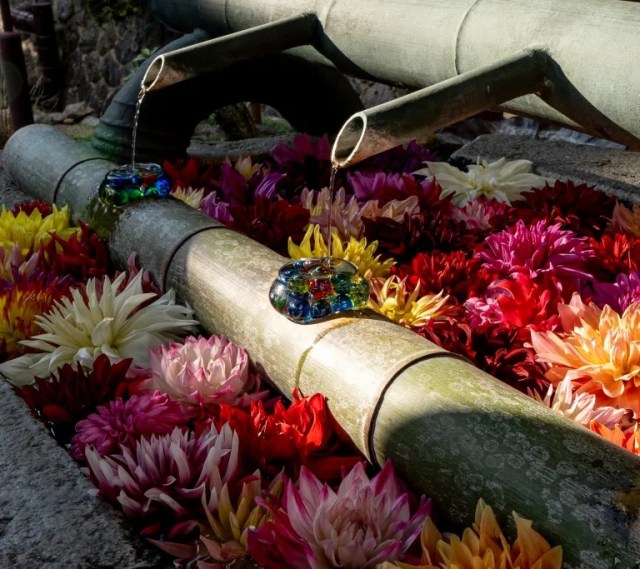
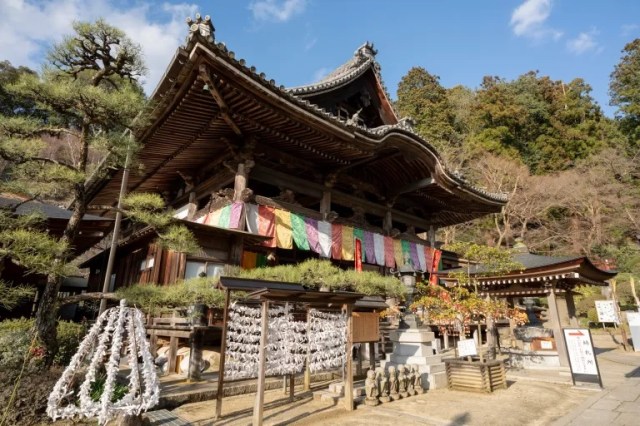
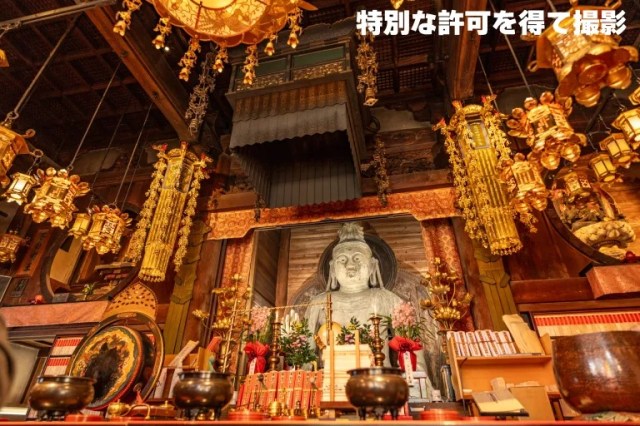
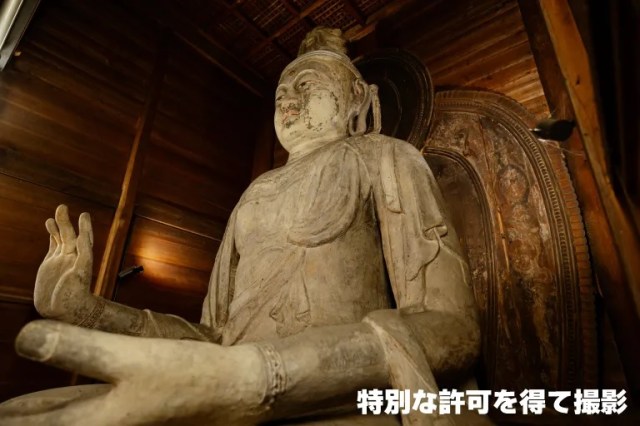
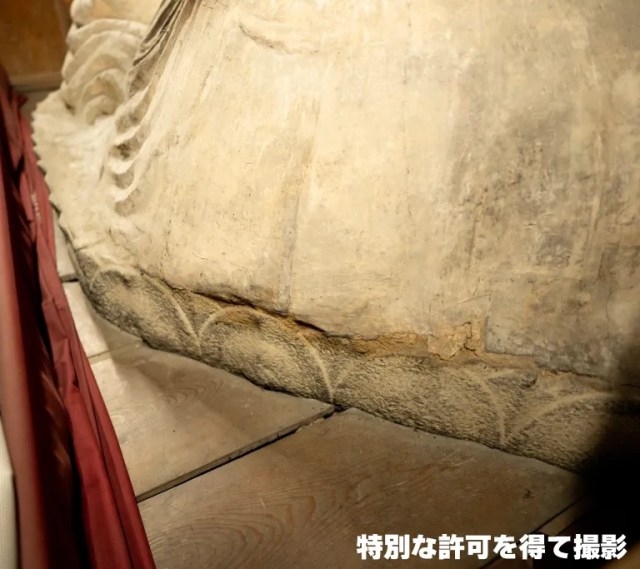
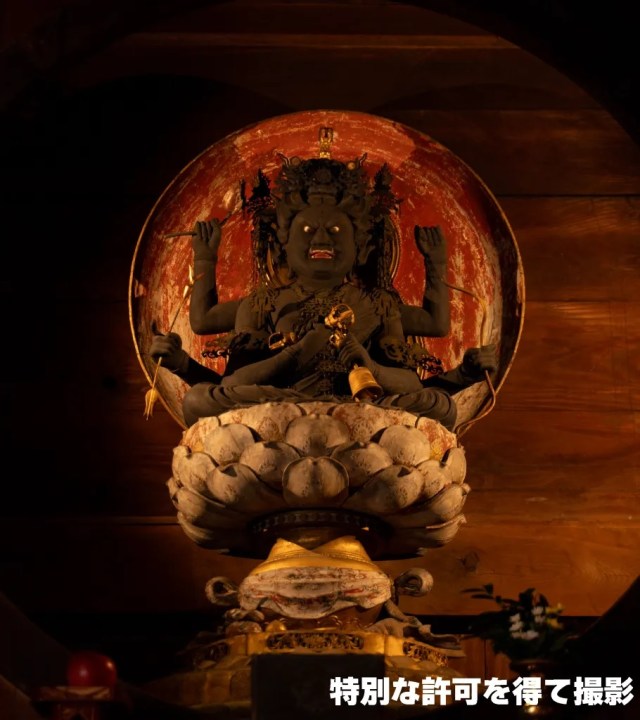
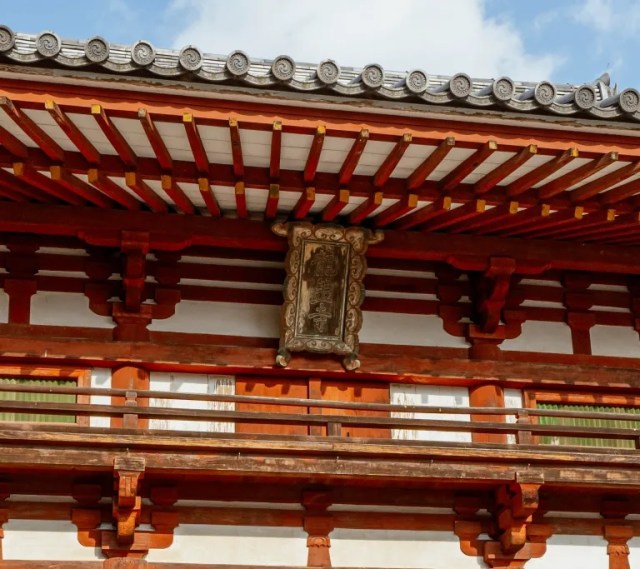
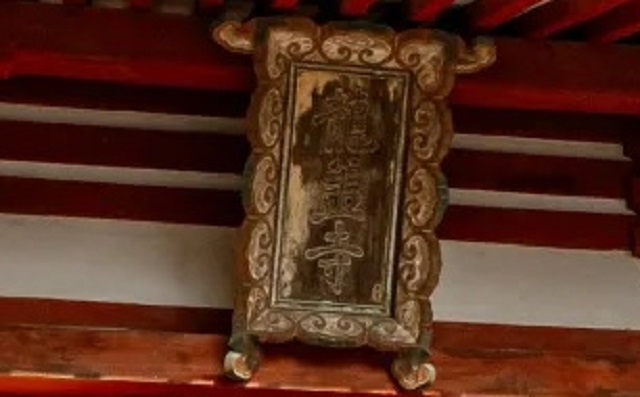
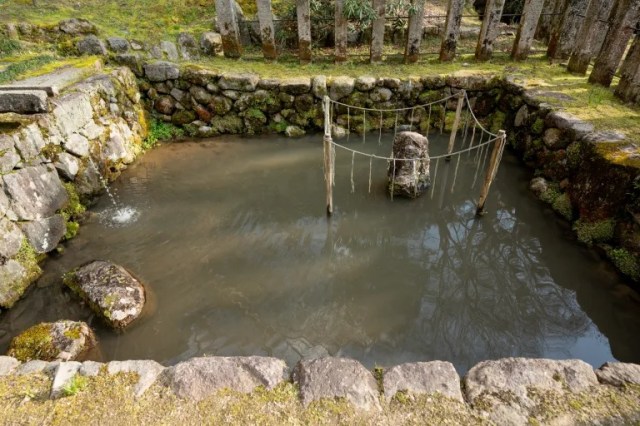
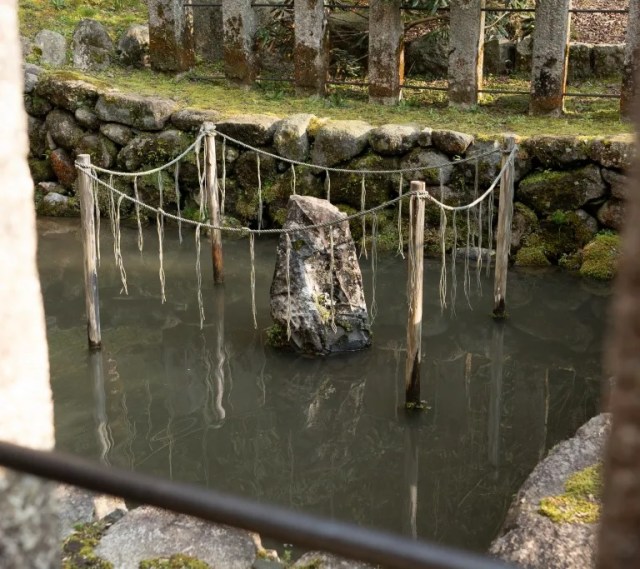
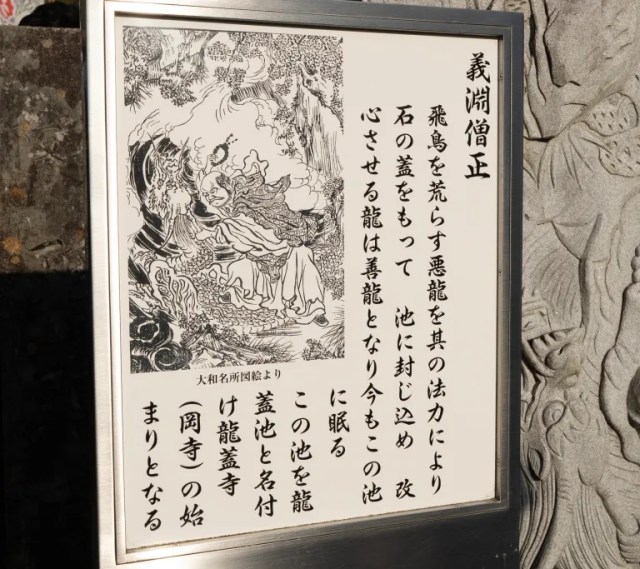
 A visit to the ordinarily forbidden hall of Nara’s Hasedera Temple【Photos】
A visit to the ordinarily forbidden hall of Nara’s Hasedera Temple【Photos】 Ancient temple with National Treasures is a hidden gem on the Nara Yamato Four-Temple Pilgrimage
Ancient temple with National Treasures is a hidden gem on the Nara Yamato Four-Temple Pilgrimage Abe Monjuin: An ancient temple with a connection to stars and astrology…and National Treasures
Abe Monjuin: An ancient temple with a connection to stars and astrology…and National Treasures This little-known temple in rural Japan has a giant Buddha bigger than Kamakura’s or Nara’s【Pics】
This little-known temple in rural Japan has a giant Buddha bigger than Kamakura’s or Nara’s【Pics】 How big (small?) is the smallest Great Buddha statue in Japan? Let’s visit and find out【Photos】
How big (small?) is the smallest Great Buddha statue in Japan? Let’s visit and find out【Photos】 Ramen restaurant’s English menu prices are nearly double its Japanese ones, denies discriminating
Ramen restaurant’s English menu prices are nearly double its Japanese ones, denies discriminating Top Japanese cosplayer Enako returns to Comiket after 6 years, creates mayhem with admirers
Top Japanese cosplayer Enako returns to Comiket after 6 years, creates mayhem with admirers Here’s what our bachelor writers ate over the New Year’s holiday in Japan
Here’s what our bachelor writers ate over the New Year’s holiday in Japan Japanese beef bowl chain Sukiya’s 2026 Smile Box lucky bag basically pays for itself
Japanese beef bowl chain Sukiya’s 2026 Smile Box lucky bag basically pays for itself What makes a good boss in Japan? Workers sound off in survey
What makes a good boss in Japan? Workers sound off in survey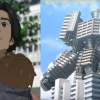 Buildings transform into giant robots in Japanese real estate company’s anime commercial【Video】
Buildings transform into giant robots in Japanese real estate company’s anime commercial【Video】 All-You-Can-Eat Fermented Soybeans for $8.50! Choose From Eight Types of Natto!
All-You-Can-Eat Fermented Soybeans for $8.50! Choose From Eight Types of Natto! Japanese thug wear from Birth Japan perfect for those breaking bad next year
Japanese thug wear from Birth Japan perfect for those breaking bad next year From Kyoto: The bicycle you can ride while wearing a kimono
From Kyoto: The bicycle you can ride while wearing a kimono The Purple Lucky Bag from Village Vanguard is an extra-large waste of money
The Purple Lucky Bag from Village Vanguard is an extra-large waste of money Starbucks Japan ready to get Year of the Horse started with adorable drinkware and plushies【Pics】
Starbucks Japan ready to get Year of the Horse started with adorable drinkware and plushies【Pics】 Hayao Miyazaki says Happy New Year to Studio Ghibli fans with new art for Year of the Horse
Hayao Miyazaki says Happy New Year to Studio Ghibli fans with new art for Year of the Horse Cup Noodle tries an authentic Jiro-style ramen, but something’s not quite right
Cup Noodle tries an authentic Jiro-style ramen, but something’s not quite right The best Starbucks Japan Frappuccinos we want to drink again in 2026
The best Starbucks Japan Frappuccinos we want to drink again in 2026 We revisited Sweets Paradise after a decade to see if Japan’s dessert buffet still delivers
We revisited Sweets Paradise after a decade to see if Japan’s dessert buffet still delivers That time Seiji called JASRAC to ask why he didn’t get paid royalties for his song being on TV
That time Seiji called JASRAC to ask why he didn’t get paid royalties for his song being on TV Pizza Hut Japan’s hot lucky bags are perfect for a New Year’s pizza party
Pizza Hut Japan’s hot lucky bags are perfect for a New Year’s pizza party Majority of Japanese mayors say foreign residents are essential but most see good and bad effects
Majority of Japanese mayors say foreign residents are essential but most see good and bad effects 7-Eleven Japan starts new temporary luggage storage service in over 300 branches
7-Eleven Japan starts new temporary luggage storage service in over 300 branches Disillusionment at Tsukiji’s tourist-target prices led us to a great ramen restaurant in Tokyo
Disillusionment at Tsukiji’s tourist-target prices led us to a great ramen restaurant in Tokyo Starbucks teams up with 166-year-old Kyoto doll maker for Year of the Horse decorations【Photos】
Starbucks teams up with 166-year-old Kyoto doll maker for Year of the Horse decorations【Photos】 Tokyo considering law requiring more trash cans following litter increase in heavily touristed area
Tokyo considering law requiring more trash cans following litter increase in heavily touristed area Tokyo’s Tsukiji sushi neighborhood asks tour groups to stay away for the rest of the month
Tokyo’s Tsukiji sushi neighborhood asks tour groups to stay away for the rest of the month Tokyo event lets you travel back in time, for free, to celebrate 100 years since Showa era start
Tokyo event lets you travel back in time, for free, to celebrate 100 years since Showa era start Japan may add Japanese language proficiency, lifestyle classes to permanent foreign resident requirements
Japan may add Japanese language proficiency, lifestyle classes to permanent foreign resident requirements Sanrio theme park in Japan announces plans to expand into a Sanrio resort
Sanrio theme park in Japan announces plans to expand into a Sanrio resort Lacquerware supplier to emperor of Japan and Pokémon team up for new tableware
Lacquerware supplier to emperor of Japan and Pokémon team up for new tableware Survey asks foreign tourists what bothered them in Japan, more than half gave same answer
Survey asks foreign tourists what bothered them in Japan, more than half gave same answer Japan’s human washing machines will go on sale to general public, demos to be held in Tokyo
Japan’s human washing machines will go on sale to general public, demos to be held in Tokyo Japan’s deadliest food claims more victims, but why do people keep eating it for New Year’s?
Japan’s deadliest food claims more victims, but why do people keep eating it for New Year’s? We deeply regret going into this tunnel on our walk in the mountains of Japan
We deeply regret going into this tunnel on our walk in the mountains of Japan Studio Ghibli releases Kodama forest spirits from Princess Mononoke to light up your home
Studio Ghibli releases Kodama forest spirits from Princess Mononoke to light up your home Major Japanese hotel chain says reservations via overseas booking sites may not be valid
Major Japanese hotel chain says reservations via overseas booking sites may not be valid Put sesame oil in your coffee? Japanese maker says it’s the best way to start your day【Taste test】
Put sesame oil in your coffee? Japanese maker says it’s the best way to start your day【Taste test】 No more using real katana for tourism activities, Japan’s National Police Agency says
No more using real katana for tourism activities, Japan’s National Police Agency says Starbucks Japan reveals new sakura drinkware collection, inspired by evening cherry blossoms
Starbucks Japan reveals new sakura drinkware collection, inspired by evening cherry blossoms Updated cherry blossom forecast shows extra-long sakura season for Japan this year
Updated cherry blossom forecast shows extra-long sakura season for Japan this year Kyoto’s Tofukuji temple opens secret area above Sanmon Gate to the public
Kyoto’s Tofukuji temple opens secret area above Sanmon Gate to the public Why does Japan’s most famous ocean legend end at this temple in the middle of the mountains?
Why does Japan’s most famous ocean legend end at this temple in the middle of the mountains? 1,032 statues, and one thing too many people miss, at this Kyoto temple
1,032 statues, and one thing too many people miss, at this Kyoto temple Temple in tiny town in Japan transforms into otherworldly beauty on special summer nights
Temple in tiny town in Japan transforms into otherworldly beauty on special summer nights Visiting Japan’s “Mt. Terror,” said to be the closest point to the afterlife【Photos】
Visiting Japan’s “Mt. Terror,” said to be the closest point to the afterlife【Photos】
Leave a Reply